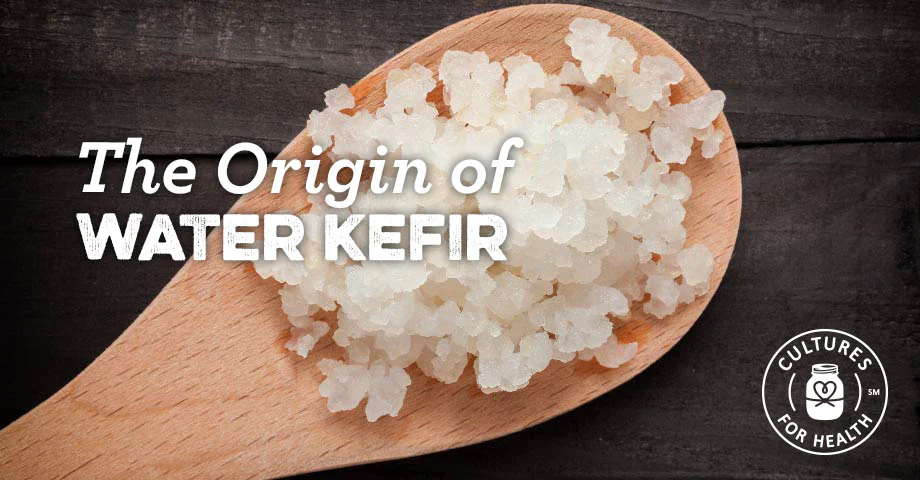
WHAT ARE WATER KEFIR GRAINS?
Many people are familiar with milk kefir grains, but what about water kefir grains? Where did that culture originate, and how does it differ from milk kefir?
Although both products are made from “grains,” these are not actual grains like wheat or rye, but rather clusters of bacteria and yeast living in a symbiotic relationship and held together by a polysaccharide (dextran) produced by Lactobacillus higarii.1 These clusters of bacteria, yeast, and polysaccharide look like little crystals, or “grains” of jelly. The bacteria and yeasts in the grains utilize sugar to produce lactic acid, ethanol (a small amount), and carbon dioxide.2
YOU MAY ALSO LIKE: Introduction to Milk Kefir | How to Find Milk Kefir Grains
NAMES FOR WATER KEFIR GRAINS
Water kefir grains are known by a variety of names, but most commonly are called tibicos, Japanese water crystals, and California bees. They are sometimes also referred to as Australian Bees, African Bees, Ginger Bees, Ginger Beer Plant, Sea Rice, or Aqua Gems, to name a few.
Different countries call them by different names. In Germany they may be called Piltz; in Italy, Kefir di Frutta; and in France, Graines Vivantes. In Mexico, tibicos (or tibi) is used to make a fermented beverage called Tepache, made from pineapple, brown sugar, and cinnamon.
Because of the highly active nature of the bacteria and yeasts in water kefir grains, there are many variations of the exact culture that produces the fizzy water kefir drink.
WHERE DID WATER KEFIR ORIGINATE?
It is not completely clear where or when water kefir grains originated, but speculation points towards Mexico. According to some research, the tibicos culture forms on the pads of the Opuntia cactus as hard kefir granules that can be reconstituted in a sugar-water solution as propagating tibicos. There is documentation from the late 1800s of water kefir grains being used in fermented drink made from the sweetened juice of the prickly pear cactus in Mexico.3
There are, however, stories that place their origin, or at least their use, in Tibet, the Caucasus Mountains, and the southern peninsula of the Ukraine. Pinpointing a place of origin is made even more difficult because water kefir cultures can be found throughout the world and no two cultures are exactly the same. Lack of recorded history also makes it difficult to place an origin date, but it seems likely these grains have been used for many centuries.
HOW TO USE WATER KEFIR GRAINS
Regardless of what name is given to water kefir grains, or the exact makeup of the culture, the technique for using them is basically the same throughout the world. Add them to sugar water and let them culture on the counter for a day or two, for a fizzy, fermented drink!
HOW-TO VIDEO: How to Make Water Kefir
If you cannot tolerate dairy, or if you are just looking for an alternative to commercial sodas, water kefir beverages can be a fun, easy, and tasty way to quench your thirst while adding more probiotics to your diet.
WHAT'S NEXT?
Whether you are just starting to explore fermented foods or are already a fermentation fanatic, we're here to help you with all things fermented. Grab some grains and watch our How-To Video on making water kefir at home to get started. You Can Do This!
Happy Culturing!
Sources
- Pidoux, M. (1989). The microbial flora of sugary kefir grain (the gingerbeer plant): Biosynthesis of the grain from Lactobacillus hilgardii producing a polysaccharide gel. World Journal of Microbiology and Biotechnology,5(2), 223-223.
- Waldherr, F. (2010). Identification and characterization of a glucan-producing enzyme from Lactobacillus hilgardii TMW 1.828 involved in granule formation of water kefir. Food Microbiology,27(5), 672–678-672–678.
- Lutz, M. (1899). Recherches biologiques sur la constitution du Tibi.Bulletin De La Societe Mycologique De France,15, 68-72.M















